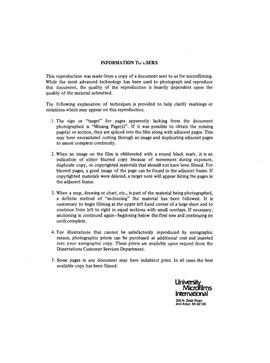| dc.description.abstract | In the past decade, mine engineers have had a difficult task in trying to increase the production of coal, particularly from deep and thin deposits. The two main mining techniques, open-pit and underground operations, are not feasible for deep and thin reservoirs. Although in open-pit the production is high, the cost of operation is also high, in addition to causing air and water pollution. In the underground mining methods, the operation is dangerous as a result of roof collapse, gas explosion (particularly methane), in addition to low production. These problems became more complicated for the engineer when the demand for higher production of coal combined with the demand for better quality of coal. These problems in the mining industries led to a new technique called "chemical comminution." Chemical comminution of coal involves reducing the size of the coal by injecting and penetration of a suitable solvent through the natural discontinuities of coal such as fractures, pores and fissures. In this study, CO(, 2) + H(, 2)O was proposed as a solvent for the chemical comminution process. Three different bituminous coal samples from eastern Oklahoma, (1) McAlester (Latimer County), (2) Croweburg (Okmulgee County), and (3) Secor (Wagoner County), and one unknown coal sample (the origin of the coal is unknown) were examined with the proposed solvent. A 500 ml stainless steel bomb reactor was used for treatment of the coal with the proposed solvent. The conditions of the treatment of the coal in each test were different. The temperature ranged from 200(DEGREES)C to 325(DEGREES)C. The pressure ranged from 2150 psi to 3600 psi. The results of the research indicated that, at higher temperatures and pressure and higher ratio of solvent to coal with longer period of experiment, the percentage of the fragmented coal was higher and the size of the fragmented coal became finer. Results of ultimate analysis of the fragmented coal showed that at 275(DEGREES)C and 3300 psi with 3.5 solvent to coal ratio for 24 hours, the total sulfur of the coal declined from 3.51 percent to 2.23 percent; and the ash was reduced from 18.65 to 17.5 percent. As a result of this investigation, it is believed that CO(, 2) and its aqueous solution in water is a suitable solvent in the chemical comminution process; and it is capable of breaking the coal and reducing the sulfur and ash contents of the coal. | en_US |
